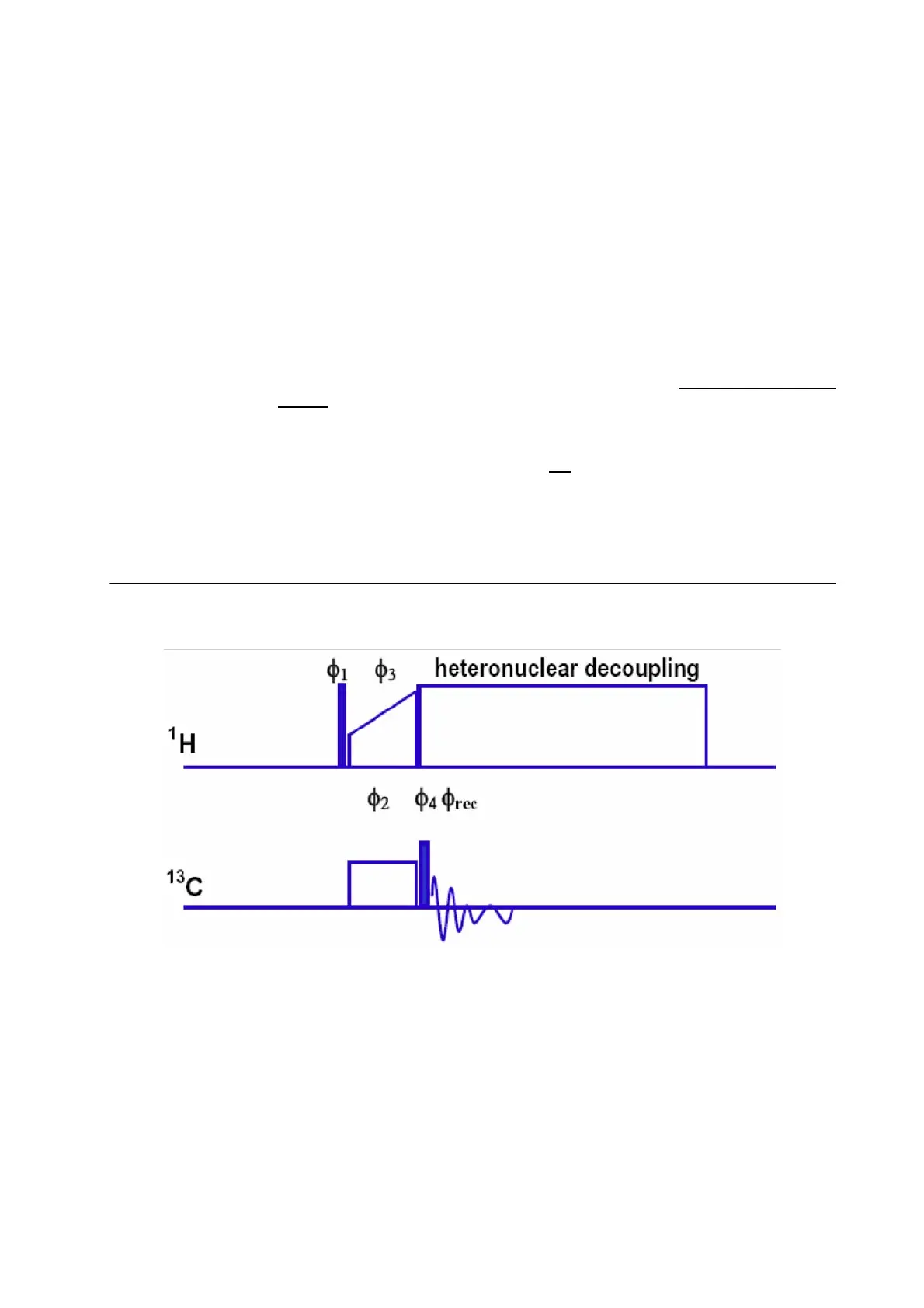User Manual Version 002 BRUKER BIOSPIN 105 (327)
7
Basic CP-MAS
Experiments 7
The following experiments can be run by calling a
13
C CPMAS standard parame-
ter, data set, or data, loading the appropriate pulse program and loading the pulse
parameters obtained previously during the setup (see
"Basic Setup Proce-
dures"). Some attention needs to be paid to special experimental parameters.
Most of those parameters are explained in the header section of the pulse pro-
grams.
The CPPI experiment series in section 7.5 requires measuring the HH match us-
ing a constant amplitude contact pulse. This can be accomplished using a rectan-
gular shape square.100, or using the pulse program cplg.
Pulse Calibration with CP 7.1
Pulse calibration for
13
C pulses after cross polarization using a flip back pulse.
Figure 7.1. Pulse Program for CP with Flip-back Pulse
The experiment can be done directly after the CPMAS setup procedure. Loading
the pulse program cp90
and setting pl1=pl11 allows one to measure the X nucle-
us spin nutation frequency at the HH contact power. Of course, the experiment al-
lows nutation frequencies to be measured at other power levels as well. The
typical nutation pattern has a cosine form, so a 90 degree pulse gives null signal.
Use glycine spinning at N kHz as before. When using POPT for such measure
-
ments the optimization type is “ZERO” so that the program looks for a zero cross-
ing at the automatic data evaluation. To get nutation patterns without phase
